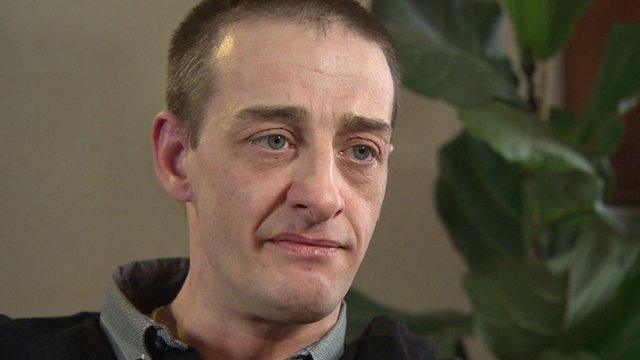The prison wing housing only terrorists
- Published
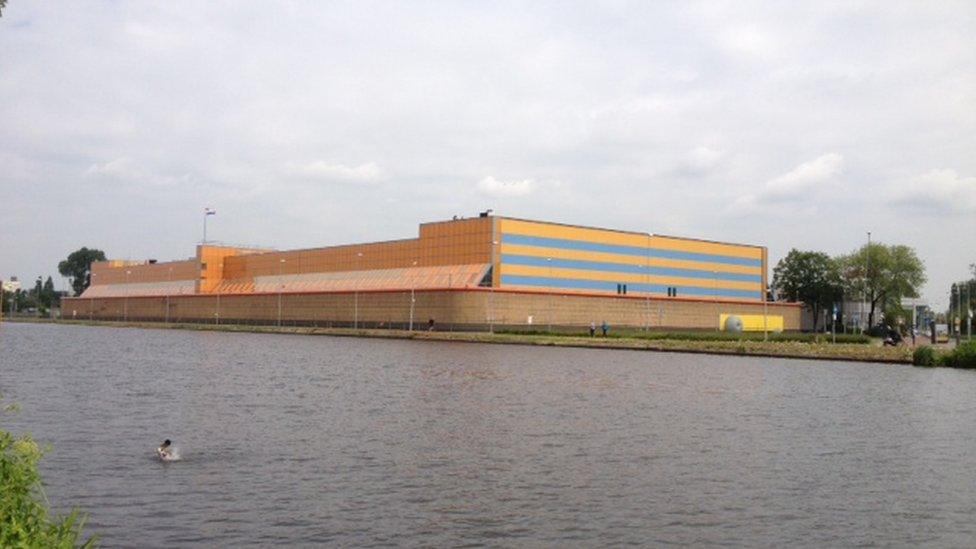
De Schie prison in Rotterdam holds seven terrorism detainees
An independent review into radicalisation in jails in England and Wales is due to be published. The BBC has learned that UK officials have visited a Dutch prison that separates terrorist offenders from other inmates. Chris Vallance was granted access to the prison.
Visiting De Schie prison in Rotterdam, you lose count of the number of locked doors you pass.
The jail, bordered on two sides by broad waterways, is a child of the 1980s; mostly salmon pink and yellow on the outside, pale blue on the inside. Official websites describe the strikingly "colourful character of the building".
To increase security, the terrorism unit is at the top of the prison. As we approach through a maze of corridors and interlocked doors, Cees, who manages the wing and requested that we did not publish his surname, points out sophisticated-looking CCTV cameras, equipped with microphones.
The TA, as the terrorism wing is called, houses prisoners on remand for terrorist offences or those who have been convicted of them.

De Schie Prison, Rotterdam:
Currently home to 252 inmates
Around one-third of prisoners are Muslim
Currently seven terrorism detainees
Since 2006, extremists separated from other prisoners

According to prison deputy director Rob Janssen, most current inmates have either wanted to travel to Syria or Iraq in support of jihadist groups or have returned from the conflict.
In Rotterdam there are seven cells in the terrorism wing, each with one inmate. A larger facility at Vught houses another 22 people.
On rare occasions De Schie has housed female and juvenile detainees.
National security
The policy, which began in 2006, separates extremists from the rest of the prison population to prevent them radicalising other prisoners.
It is this system that interested the UK officials who visited the terrorism wing at Vught.
Does holding terror offenders separately from other prisoners help prevent radicalisation?
It is understood the government is currently considering proposals for a unit housing a very limited number of extremist inmates considered to present a genuine and enduring risk to national security.
The TA is, in effect, a jail within a jail. There is no contact between the inmates and other offenders.
It has its own gym, with speakers playing pop music, and a kitchen. Through its darkened glass, two inmates could be seen cooking, a pleasant smell of frying meat filling the corridor.
Recruitment fear
The social activity of the inmates is tightly controlled. The cell windows overlook a courtyard used for exercise.
The area used by the terrorist prisoners is separated by a fence and a large fretwork metal dome sits over most of it. Guards will intervene if TA inmates attempt to shout to other inmates.
For terrorism unit manager Cees, there is no doubt these measures prevent the radicalisation of other inmates.
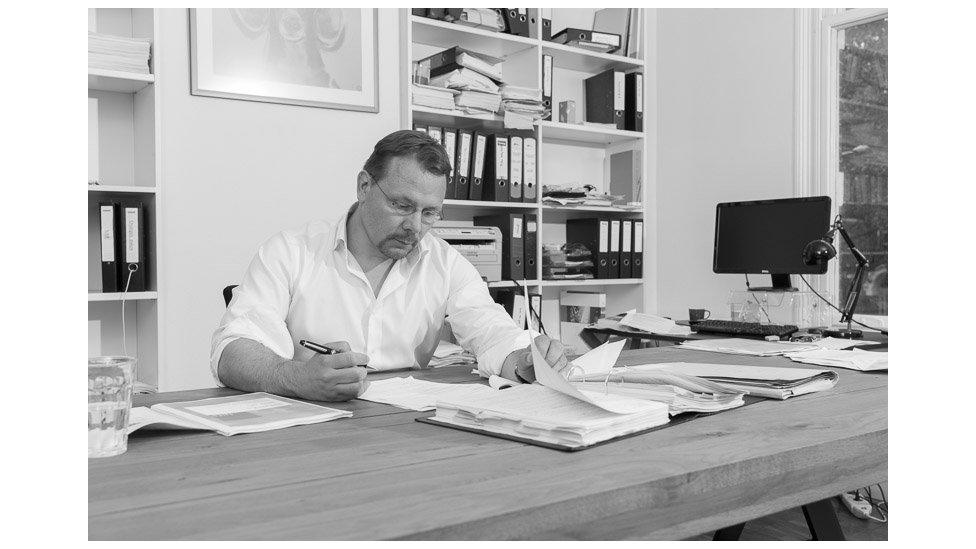
Lawyer Andre Seebregts says the system is further radicalising inmates
He tells me one prisoner who was in the TA unit was moved into another part of the jail and began radicalising others.
"So I think it is good to put the prisoners in one unit," he said.
Others have raised concerns that by putting extremist offenders together, they are likely to reinforce each other's beliefs and become further radicalised.
Lawyer Andre Seebregts says the "severe" regime, including frequent strip searching of inmates and intense surveillance, is counter-productive.
"I have eight to 10 clients who have spent time in these wings, and I distinctly have the impression that they become more and more negative towards the Dutch authorities, and they feed off each other," he says.
'Least worst option'
Daan Weggemans, a researcher at Leiden University, found a more mixed picture. For half the detainees he studied, imprisonment resulted in a "confirmation of their hostile world view".
However, others saw it as a "wake-up call" and broke with their former violent extremist networks, he says.
During my visit, I was not permitted to talk to the detainees, but a former inmate of a Dutch terrorism wing agreed to talk about their experiences on condition that they were not named.

Dutch prisons director Angeline van Dijk says they want to keep high-risk offenders away from those who could be radicalised
The ex-prisoner felt the unit was a necessity and "the least bad of all bad options" because it prevented the radicalisation of inmates in the general prison population.
But they said care was needed to house only extremist "leaders" on the wings and not their "followers", who presented a much lower risk of radicalising others.
Cees says the Rotterdam prison does recognise such distinctions. Inmates are only allowed to meet in two groups, one group containing those still committed to their extremist beliefs and another smaller group of those who want to work on their "re-socialisation and reintegration".
The Dutch government continues to discuss how to deal with extremist offenders in the terrorism units.
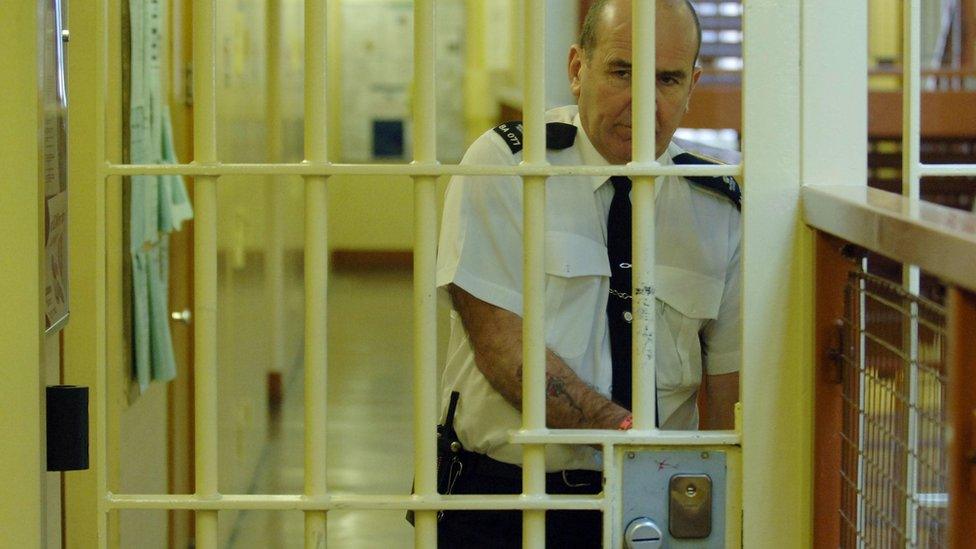
The UK government is looking at how it deals with terrorism offenders
In her office in The Hague, Angeline van Dijk, director of the prison system in the Netherlands, says the authorities understand that prisoners are not all the same.
A newly developed "assessment tool" will, she told me, allow the authorities to separate inmates within the units, helping to keep the high-risk offenders from those who might be further radicalised.
With many more terrorist offenders in jail in England and Wales than in Holland, the proposals being considered by the UK government are even more selective, the BBC understands.
There are no plans for anything like a "jihadi jail". Any terrorist wing would be small and highly targeted to ensure its inmates would only be those who present the gravest risks.
- Published7 April 2015
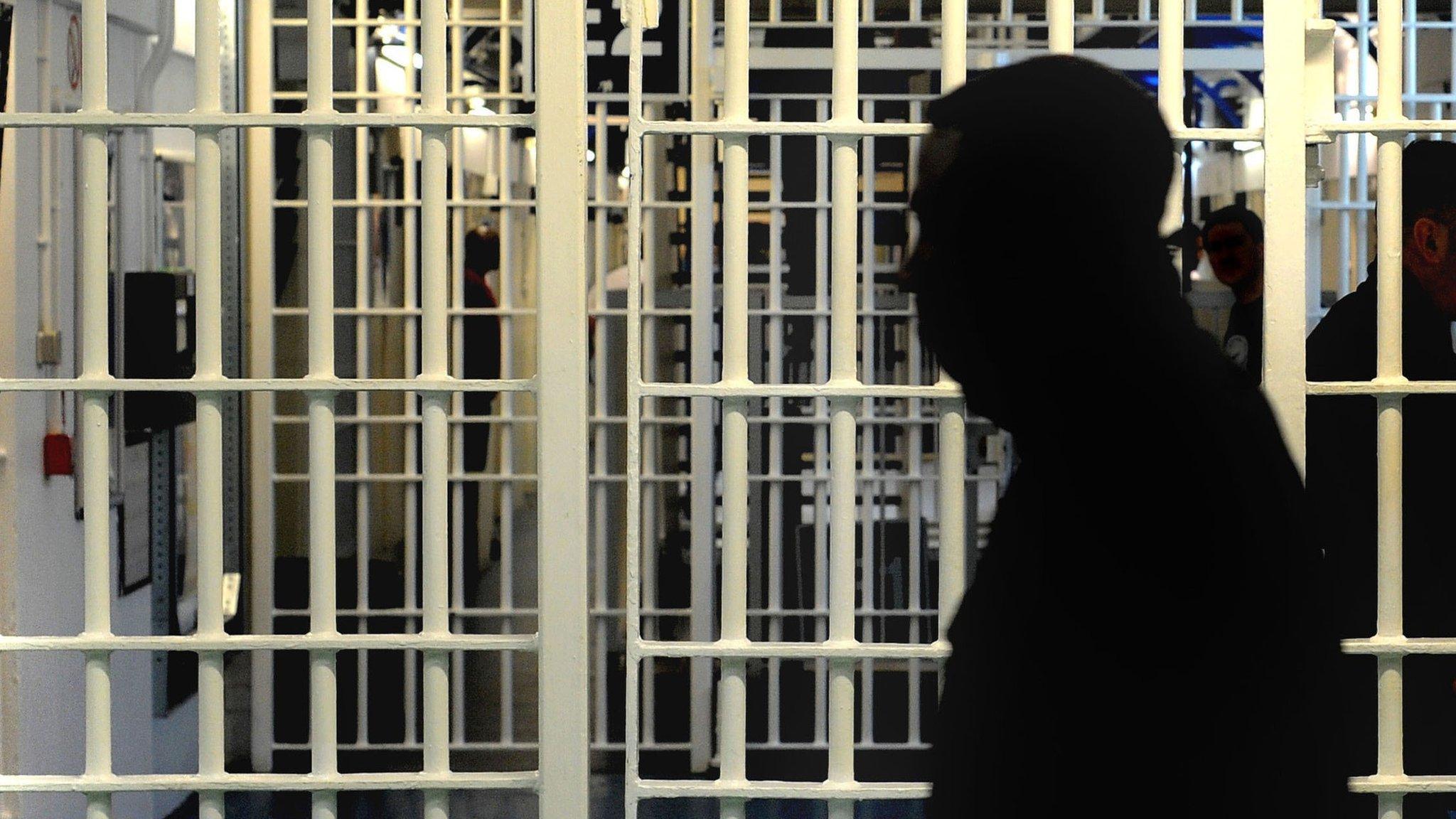
- Published22 February 2016
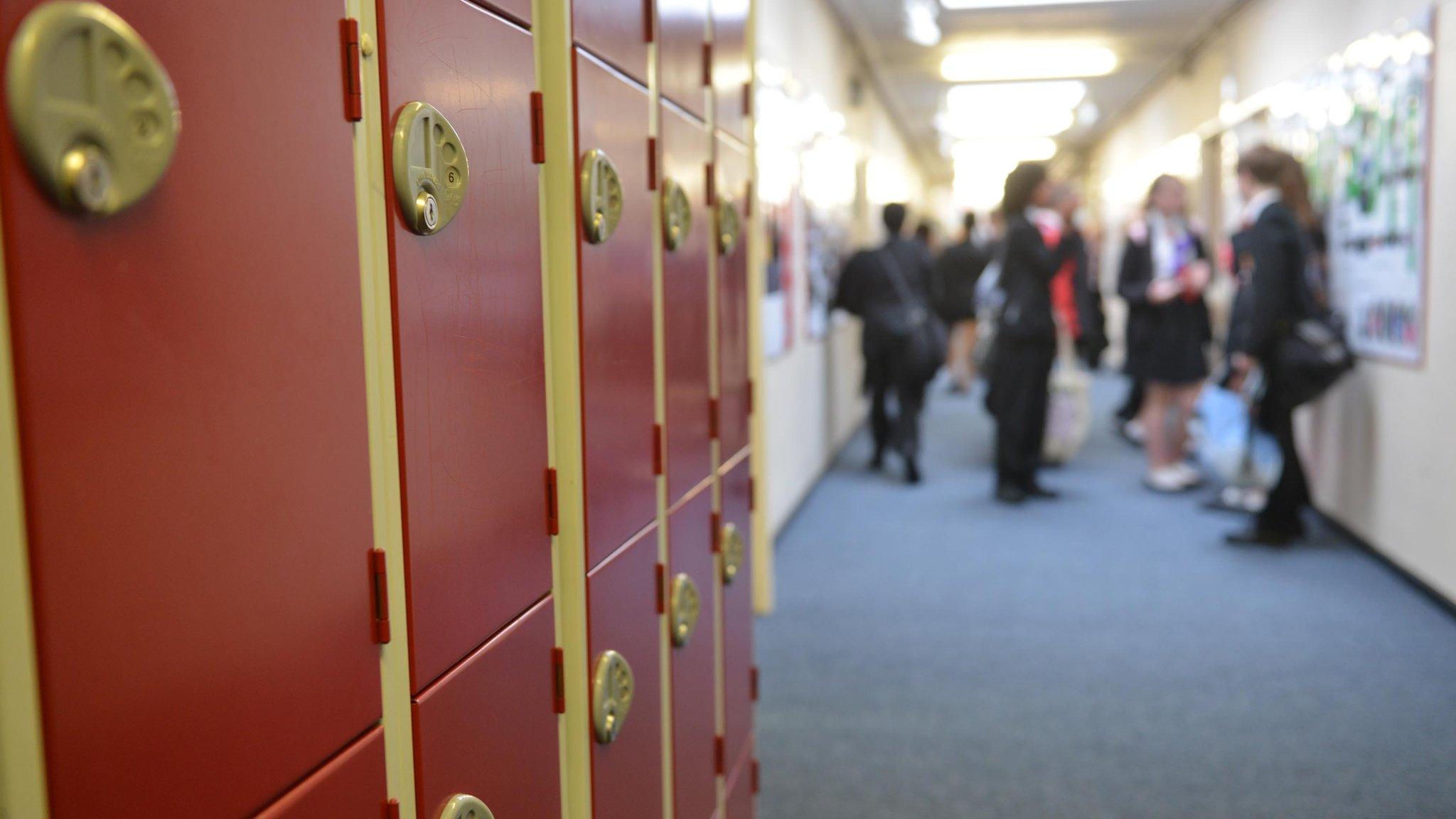
- Published23 March 2015

- Published7 April 2015
